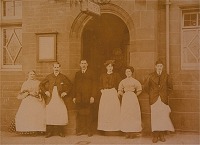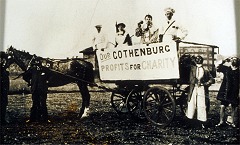Contents ![]() | The earliest public libraries
| The earliest public libraries ![]() | Learning organisations
| Learning organisations ![]()

Trust Public Houses - the Goths
Page 1 of 3 | Next
Origins
The system began in the early nineteenth century in Gothenburg, Sweden, hence its name, as an attempt to control the consumption of alcohol.
Until the early 19th century every Swedish householder had the right to distil their own spirits - and many did. At the time the annual consumption of alcohol was quoted as 7.5 gallons per head! In 1855 a law was passed making domestic distillation illegal and licensing commercial providers. The city of Gothenburg decided to award the retail spirits licences to only one company, which would be run as a trust. The trust aimed to control pubs, restaurants and off licences in a way which would not encourage excessive consumption of spirits.

The whole set up of the trust was to control excessive drinking but also to provide benefits for the community for the profits. By controlling the income the town treasury provided libraries, museums, parks and other community facilities. Although the sale of beer and wine were not included in these restrictions, the system proved extremely profitable, providing thousands of Kronor annually for Gothenburg.
After spreading through Sweden Temperance campaigners and public house reformers in Scotland promoted the idea. The system was applied in various ways in Scotland, although the movement gained its firmest hold in mining communities (despite the disapproval of ultra-temperance crusaders).
Page 1 of 3 | Next
In this section:
Schools of arts and the mechanics institutes | Working Men's Institutes | Trust public houses
Contents ![]() | Institutes of learning
| Institutes of learning ![]() | Learning organisations
| Learning organisations ![]()